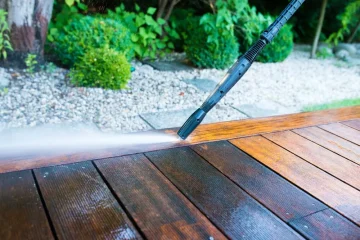The Sheet Metal Process encompasses a range of techniques and equipment used to fabricate, shape, and assemble metal sheets into various products and components. From cutting and bending to welding and finishing, each step in the sheet metal process requires specialized equipment to ensure precision, efficiency, and quality. Let’s delve into the essential equipment used in the sheet metal process and their roles in manufacturing diverse metal products.
1. Cutting Equipment
Shears: Mechanical or hydraulic shears are used for straight-line cutting of metal sheets. They come in various sizes and capacities, allowing precise cutting of different sheet thicknesses.
Laser Cutting Machines: Laser cutters use high-powered lasers to cut intricate shapes and patterns on metal sheets with exceptional precision and speed.
Water Jet Cutting Systems: Water jet cutting machines use a high-pressure stream of water mixed with abrasive materials to cut through metal sheets, offering versatility in cutting various materials and thicknesses.
2. Bending and Forming Equipment
Press Brakes: Press brakes are essential for bending and shaping metal sheets into desired angles and configurations. They use hydraulics or mechanical systems to apply force and create precise bends.
Roll Forming Machines: Roll forming machines use a series of rollers to gradually bend and form metal sheets into continuous profiles or shapes, such as channels, tubes, and angles.
Stamping Presses: Stamping presses employ dies and punches to form metal sheets into specific shapes, including holes, notches, and embossed patterns.
3. Joining and Welding Equipment
Spot Welders: Spot welding machines use electrodes to apply localized heat and pressure to join metal sheets together at specific points, creating strong and durable welds.
MIG/TIG Welders: Metal Inert Gas (MIG) and Tungsten Inert Gas (TIG) welding machines are used for precision welding of metal sheets, offering versatility in joining different metals and thicknesses.
Resistance Welders: Resistance welding equipment, such as seam welders and projection welders, use electrical resistance to create welds between overlapping metal sheets, ideal for high-volume production.
4. Forming and Finishing Equipment
CNC Punch Presses: Computer Numerical Control (CNC) punch presses use programmed commands to punch holes, cutouts, and shapes in metal sheets with high speed and accuracy.
Deburring Machines: Deburring equipment removes sharp edges, burrs, and imperfections from metal sheets, ensuring smooth and safe surfaces.
Surface Finishing Tools: Equipment like grinders, sanders, and polishers are used to achieve desired surface finishes, textures, and coatings on metal products.
5. Assembly and Fastening Equipment
Riveters: Riveting machines are used to join metal sheets or components by forming rivets, providing strong and permanent connections.
Fasteners and Hardware: Various fasteners, such as screws, bolts, nuts, and clips, are used in conjunction with assembly equipment to secure metal parts and assemblies.
Adhesive Bonding Systems: Adhesive bonding equipment facilitates the bonding of metal sheets or components using specialized adhesives and curing processes, offering alternative assembly methods.
Conclusion
The sheet metal process relies on a diverse array of specialized equipment to cut, bend, form, join, and finish metal sheets into final products and components. Each type of equipment plays a crucial role in achieving precision, efficiency, and quality in sheet metal fabrication, catering to a wide range of industries and applications. Understanding the capabilities and functions of these equipment pieces is essential for successful sheet metal manufacturing operations.



